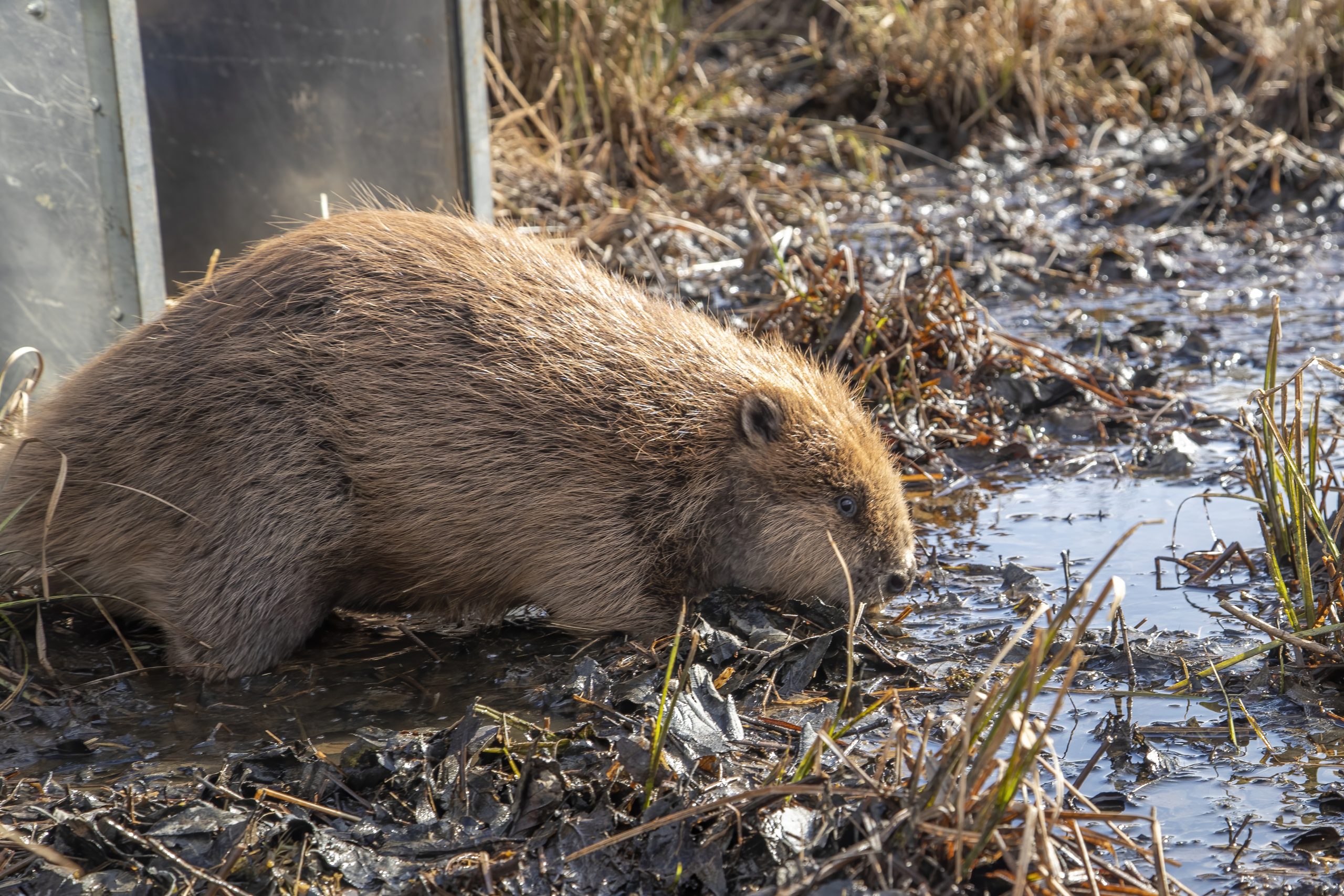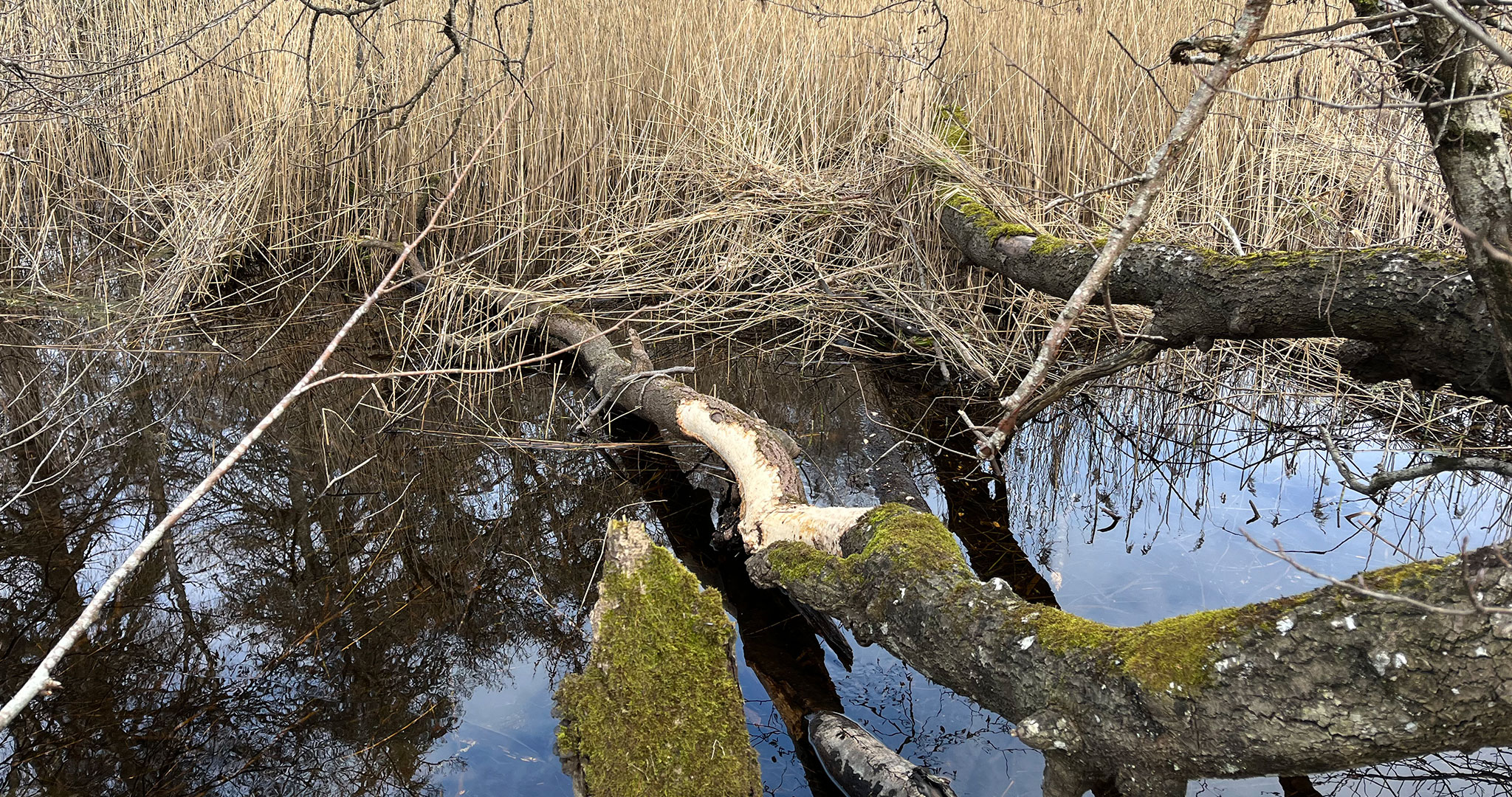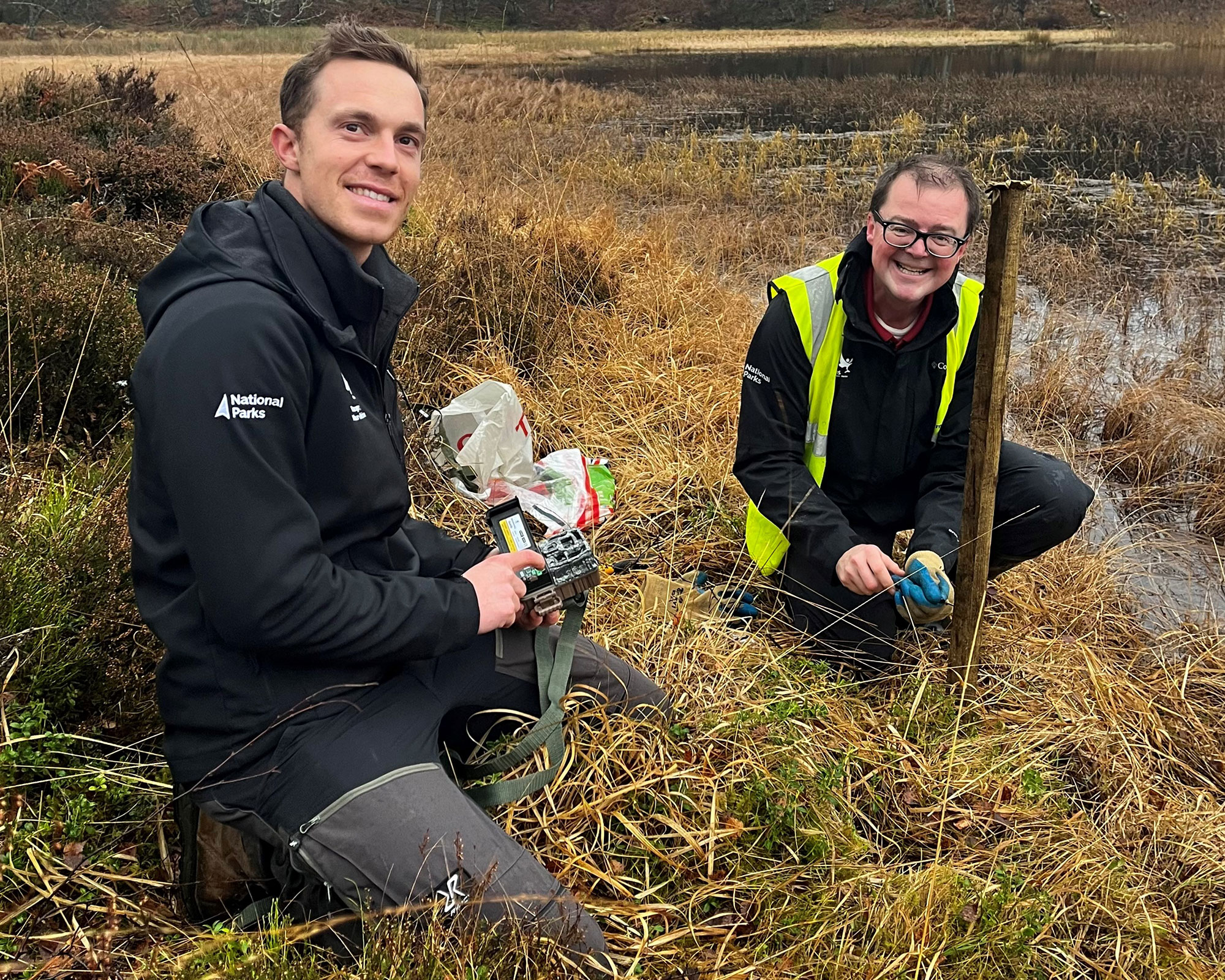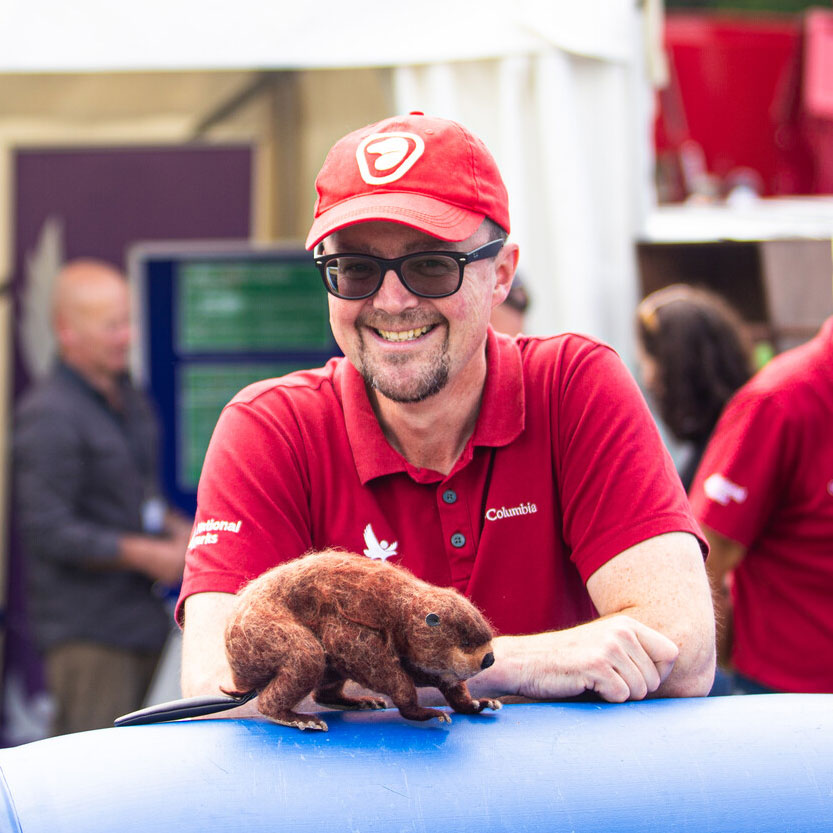Beaver blog – the end of the season, but the hard work continues
Reflecting on the whirlwind of the last 12 months, I am reminded that efforts to return beavers to the Cairngorms National Park have taken decades. Years of conversations between land managers, conservationists, partners and communities here in the Cairngorms, but also nationally and internationally, have shaped our approach. Now as I sit here to try and summarise the last year of my working life it is only right that I start by thanking all those who have been involved to date.

When I started my job as Beaver Project Manager on 15 March 2023 I knew the task ahead was a big one, and a little (okay, a lot) daunting. Reintroducing a species properly and effectively is no easy task. And yet as I write this we have just wrapped up our first ‘beaver year’, with the final two families of beavers having been released on RSPB Scotland Insh Marshes a few days ago.
A total of 18 beavers have now been released within the National Park. Under our NatureScot licence we were permitted to release a maximum of six pairs or families into the Upper Spey catchment in the first trapping season, which runs from mid-August to mid-March, and this first phase has now been completed.
I’m very happy to report that all of the beavers seem to have settled in nicely and that we’re beginning to see signs of beaver activity. Already some families have built lodges, making themselves a home. They’ve gnawed and felled trees that create valuable deadwood, providing shelter for fish and a great habitat for insects, which in turn create food for birds and bats. We expect on the burns where they will build dams that this will slow the water flow, mitigating against flooding and reducing drought as we enter the warmer, drier months. As time goes on we’ll be watching closely as they help with healthier habitats, clean rivers and functioning ecosystems.

Beavers can’t, and won’t, fix everything, and we also do acknowledge that in some areas beavers can cause issues and require management. A really important part of the last few months for me has been the conversations we’ve had with farmers, land managers and communities who have shared concerns about the reintroduction of beavers. Some of these conversations haven’t been easy – we haven’t always agreed – but they have been vital in shaping our approach, not least in the development of our management and mitigation scheme and the support we can provide (more on the scheme available here). I also think that these conversations, and the setting up of an Agricultural Advisory Group in the Park, marks a genuinely positive step forward and closer relationship between farmers and crofters and the Park Authority.
Despite the season drawing to a close, the work is so far from over. Over the next days, weeks and months I will be out with the team monitoring the situation on the ground and working with landowners and managers to deal with any issues that might arise as a result of their activity. We’ll be on the look out for kits (baby beavers) and working with visitors and local communities to reduce the risk of disturbance. I’ll also be continuing to give talks and leading walks for interested parties, drawing on my fact file about beavers and sharing more about what they’ve been up to in the local area.

And of course, I’ll be looking forward to hearing from local landowners interested in releasing beavers to their land when the next season begins, and starting those conversations with neighbours and local communities as early as possible.
For nearly 30 years I have been involved in nature conservation
It’s amazing to look back and think about what we’ve achieved in a year. I’m so proud to have worked with partners, specifically Rothiemurchus Estate, Wildland Limited, RSPB Scotland Insh Marshes, the Beaver Trust, NatureScot, the Five Sisters Zoo, and the Endangered Landscapes and Seascapes Programme, and I’m grateful to everyone whose been a part of this very special year.
To give beavers the best chance of success we still need to minimise disturbance, so if you’re visiting areas with our new neighbours over the next few weeks here’s how you can help:
– Give beavers space
– Be quiet and respectful
– Keep dogs under close control
– Stick to the paths
– Follow on site signage
